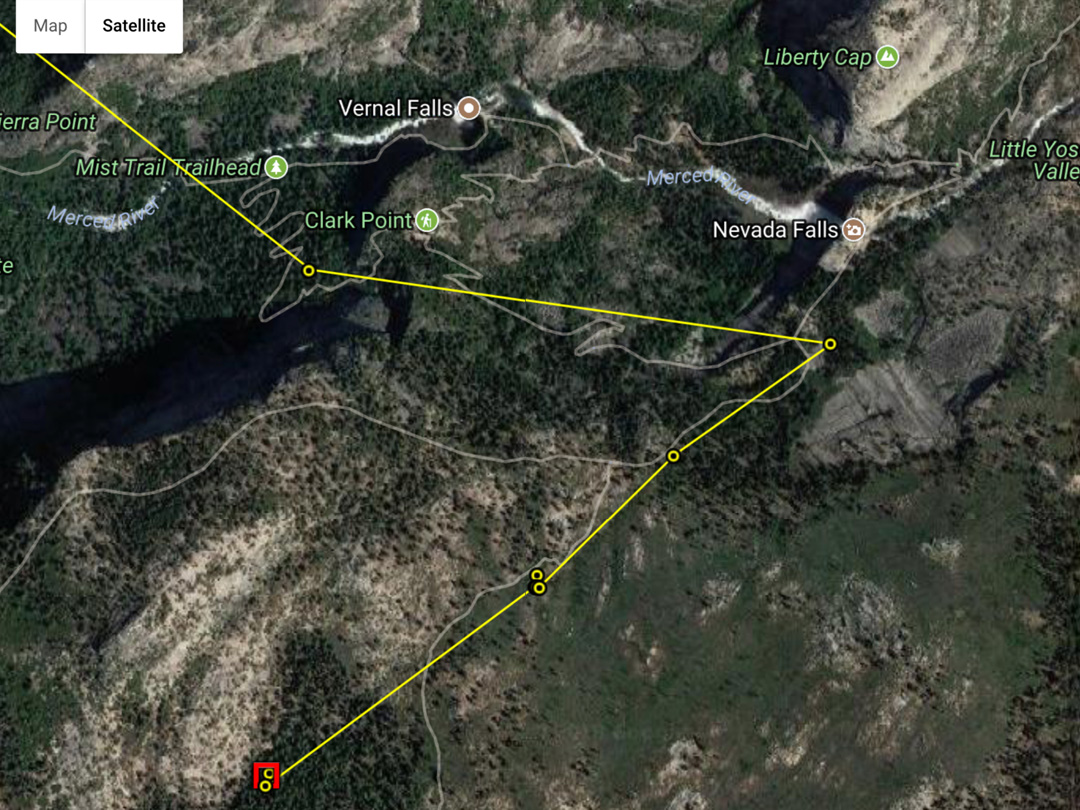
Trails make getting through the rugged Yosemite wilderness easier for bears and humans alike. This GPS track shows an adult male bear that decided to follow a few of the scenic trails leading out of Yosemite Valley one day in the summer of 2014. Yosemite’s trails traverse much of the park, and humans and bears often agree on the best trailside rest stops, access to water, and cozy campsites. Unfortunately, this also means that bears can learn to associate busy trails with opportunities to find dropped food, unattended packs, and even beg for handouts. While it’s not necessarily common to stumble upon a bear while hiking, there are a few things people can do to help wildlife.
Wild bears naturally avoid human activity, but as a they spend time in the presence of people without experiencing negative consequences they may quickly become habituated. When bears become habituated to human presence, they lose their natural instinct to fear or avoid people and are more likely to spend time along popular trails. As bears learn to move comfortably in busy human environments, their opportunistic nature inevitably leads to conflict. A bear that spends significant time around people is much more likely to find an unattended backpack, open bear canister, or food trash. The first time a bear obtains high-calorie human food, it can quickly become food conditioned and preferentially seek out areas of human activity in search of it. This behavior often results in escalating conflicts where wildlife managers are forced to intervene; oftentimes on crowded trails or in remote wilderness locations.

With the privilege of hiking in the stunning Sierra Nevada mountains comes the importance of learning trail etiquette, including appropriate behavior around black bears. Day hikers and backpackers in Yosemite have the responsibility to stay within arm’s reach of their food while hiking by never leaving their backpack unattended or walking away from their food while picnicking. Anyone staying overnight in the park’s wilderness needs to carry an allowed bear-resistant food container to keep bears and other wildlife from accesing its contents (and so that a backpacker won’t lose all their food to a bear). It is important to give wildlife space (at least 50 yards for a bear), even if that means waiting for a bear to move off a trail before proceeding. Surrounding a bear on a trail may force the animal into close proximity to humans, block its escape routes, and/or create a dangerous situation for both people and the bear. If you encounter a bear on the trail, give the animal plenty of space and protect your food. Keep it with you. Do not abandon it, or throw it to the bear as a distraction. If the bear approaches you, a campsite, or is attempting to eat human food, gather together and yell, “Get out of here, bear!” as loudly as possible. Report all bear sightings to Yosemite’s Bear Hotline at 209/372-0322.
Although particular bears may seek out easy high-calorie human food, natural food sources are plentiful for the well-adapted American black bear. They do not need our food to survive, rather the opposite. They need to avoid our food in order to maintain their natural bear behaviors, and avoid conflict with people. Grasses, insects, berries, and acorns provide ample food for bears in wilderness. Remember, the ONLY help they need from us is respect and distance!
